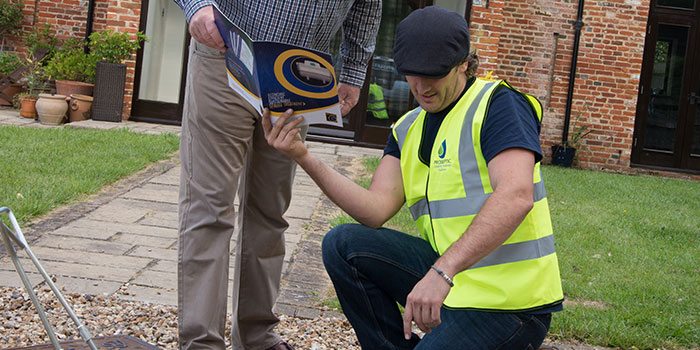A septic tank or small sewage treatment plant is an efficient system comprising of several different parts serving different functions.
Some are self-explanatory (tank, reservoir, pipes) but if you’ve ever been, well, ‘baffled’ by what a septic tank baffle is, wonder no more.
This unassuming but vital component is found at the junction between the septic tank and the sewer line.
What does a septic tank baffle do?
The waste inside your septic tank settles into three layers – scum on top of water, with sludge from the broken-down waste at the bottom.
A baffle guides the wastewater through the tank while preventing the scum and sludge from exiting.
Typically, there will actually be two baffles inside your tank, each performing a specific job:
Inlet Baffle
This aids wastewater flow through the tank and minimises disturbance of the scum layer.
It also provides a longer path along the tank to allow more time and room for separation.
If the inlet baffle doesn’t function correctly the solids and scum layer can overflow into the outlet line.
Outlet baffle
This is simply to let water out of the tank while ensuring the solids and scum layers stay in.
Often, outlet baffles are fitted with an effluent filter placed inside to prevent clogging problems.
When does a baffle need repairing or replacing?
While septic tank baffles are built to last, inevitably they can fail over time, with the material they’re made of often proving a factor.
In older tanks, typically baffles are made from concrete, which can crumble over years of exposure to corrosive gases.
While in newer tanks, plastic is favoured because of its ease of manufacture and improved durability.
But despite their longer life expectancy, plastic baffles can still become damaged over time due to external pressures, such as ground shifts.
As they lose their shape and effectiveness, defective baffles can lead septic tanks to back up and cause problems for your property.
A faulty baffle can also adversely affect the soakaway, by creating blockages which are difficult to correct.
Often, a broken or damaged baffle will unfortunately require a replacement of the entire septic tank.
The safest way to ensure if yours requires fixing or replacing is with a professional survey visit.
Further information
A septic tank baffle is just one element of a system that safely processes your domestic wastewater.
If you’re unsure whether or not yours is functioning correctly, please get in touch to speak to one of our specialists.
